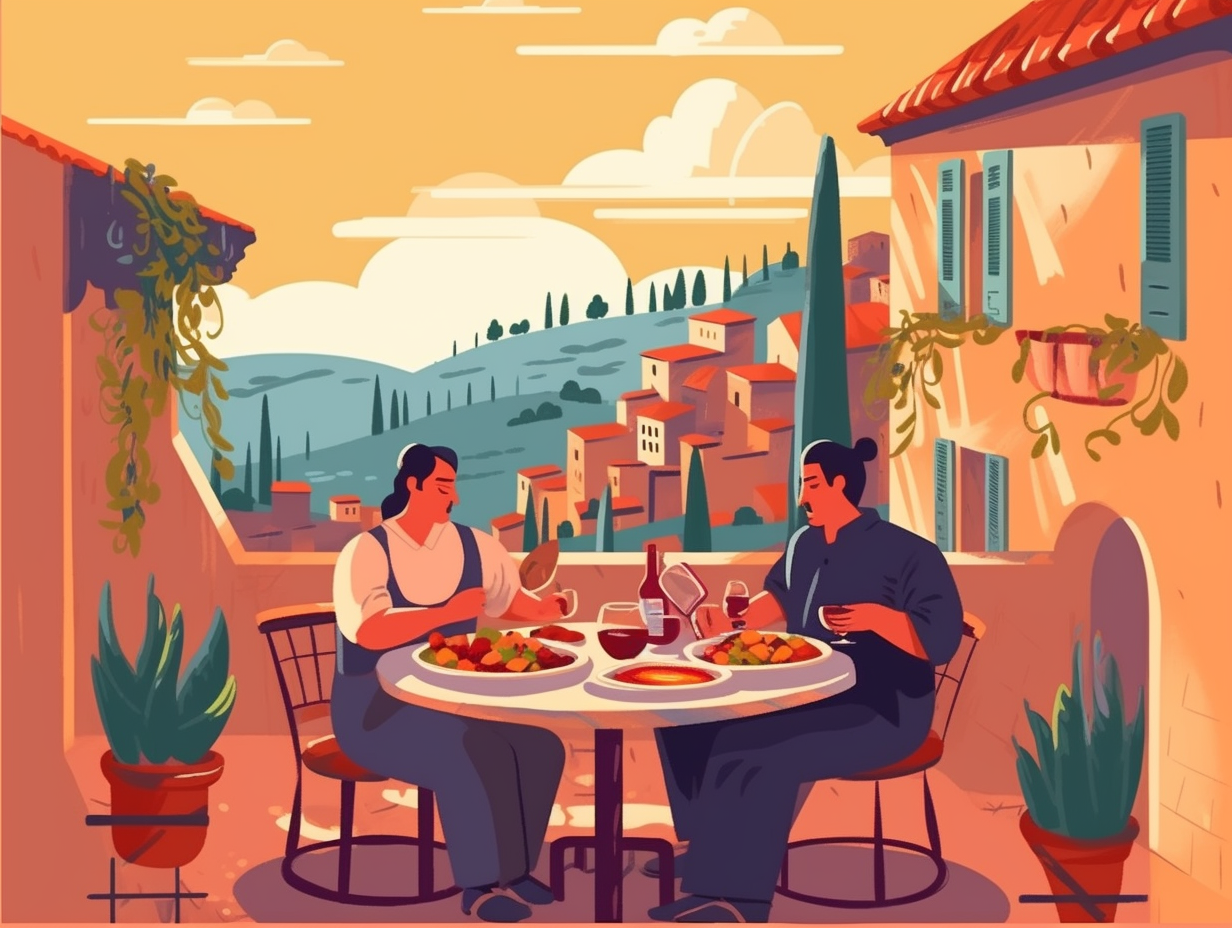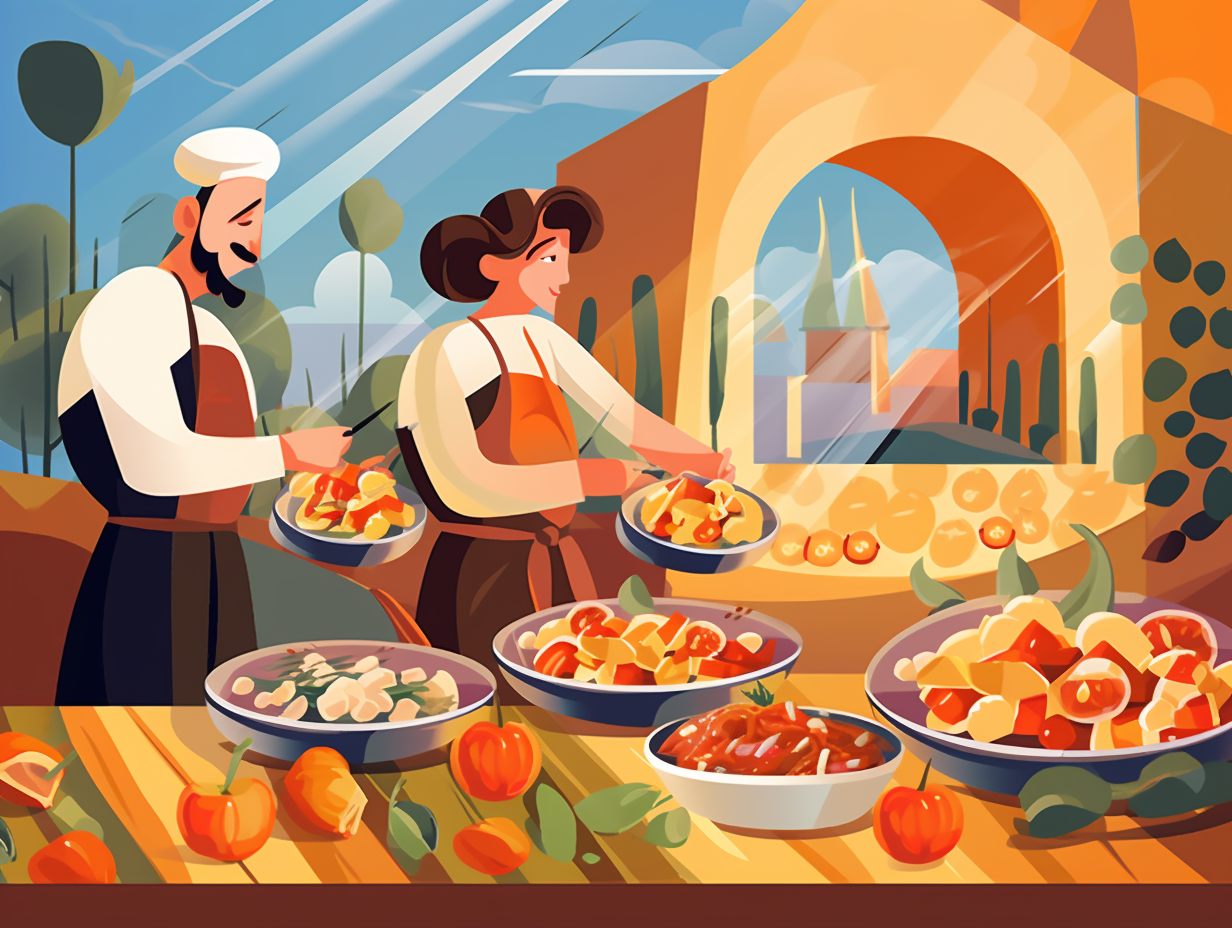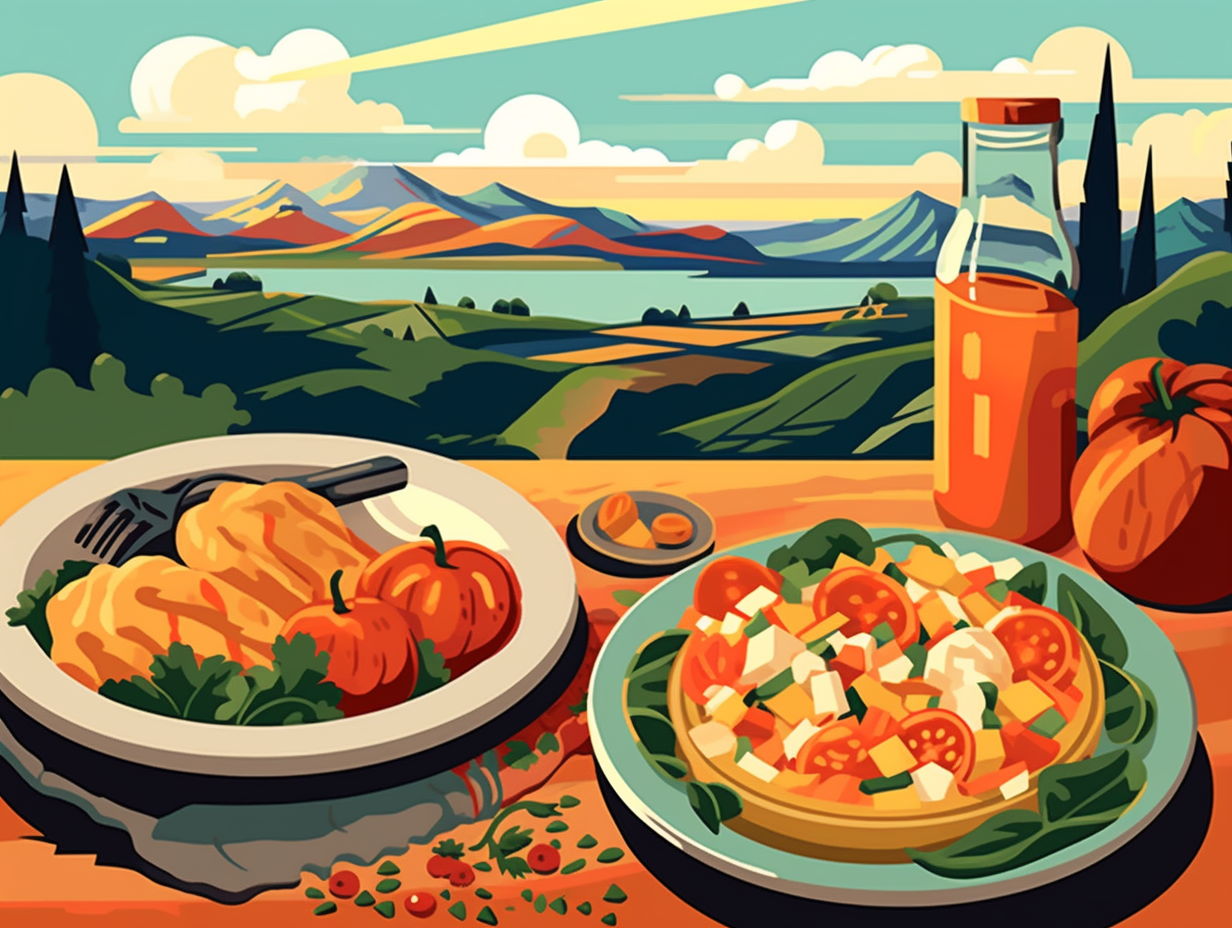11 Scrumptious Secrets: Unveiling Fun Facts About Spanish Food & Cuisine!
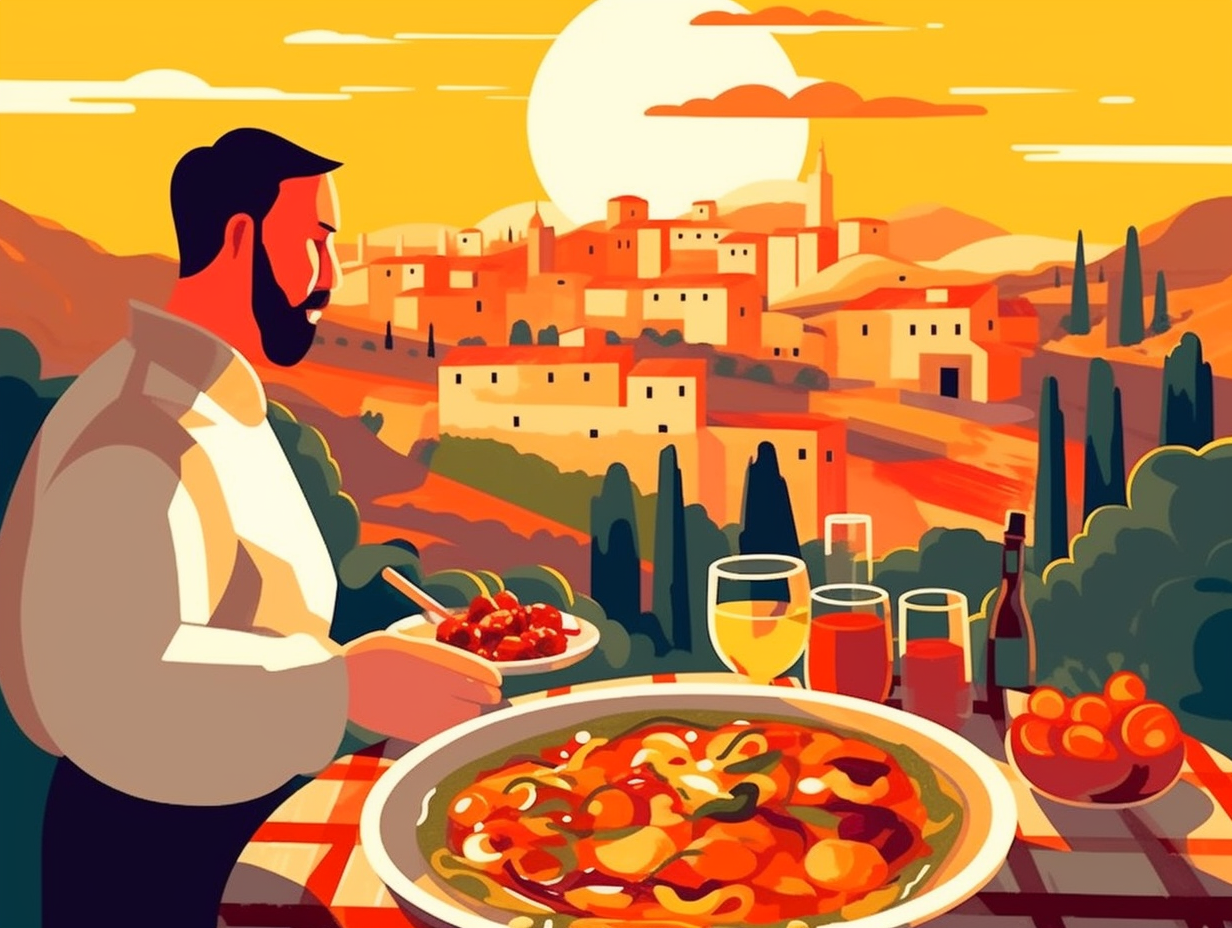
1. Tortilla de Patatas: The 'Eggstraordinary' Dish
If cartoons have ever taught us anything, it's that the best way to catch a sneaky burglar is with a good ol' frying pan to the face. But in Spain, that same frying pan is used to catch your taste buds off guard with a lip-smacking dish that's perfect for any meal: Tortilla de Patatas! A scrumptious potato, onion, and egg combo, this versatile tapas superstar can be enjoyed for breakfast, lunch, dinner, or stuffed between slices of bread for one 'eggstraordinary' sandwich.
Source => mayihavethatrecipe.com
2. Olive Oil: The Liquid Gold of Spain
In a slippery situation of global gastronomy, Spain's olive oil is the lord of the liquid gold: Producing not only the largest quantity, but also the highest quality of olive oil worldwide, Spain exports around 70% of its oils to over 175 countries, generating roughly five million euros in revenue and creating more than fifty million working days in the olive sector and related industries annually.
Source => juanvilar.com

Did you know that guacamole is not only delicious but also a key to looking and feeling amazing? Discover the many health and beauty benefits of this creamy green wonder! 🥑💚
=> Fun Facts about Mexican-Food
3. Mushroom Magic: Spain's Fungi Fabulousness
In the ongoing culinary saga of "To Mush(room) and Beyond," Spain is silently casting its spell by making fungi fabulous and transforming mycepops into mycefood : Spain stands as the third-largest mushroom producer in Europe, with three small villages in La Rioja generating 77,000 tonnes of mushrooms every year. The nation's Mushroom Technological Research Centre is diligently working on sustainable casing, and the Nordic region explores food waste usage for climate-efficient mushroom cultivation, making European food production more sustainable and waste-reducing, one mushroom at a time.
Source => ec.europa.eu
4. Paella: The Party Animal of Spanish Cuisine
Who said you can't have your paella and eat it too? In the land of flamenco and fiestas, this iconic dish dances to its own beat, swapping partners from chicken to snails like a true party animal: The real MVP, Spain's cherished paella, took its first steps in Valencia where it flirted with local ingredients like rabbit and veggies before giving in to the sultry temptation of seafood – an iconic union that's had folks hungry for more since Moorish and Roman times.
Source => elmeson-santafe.com
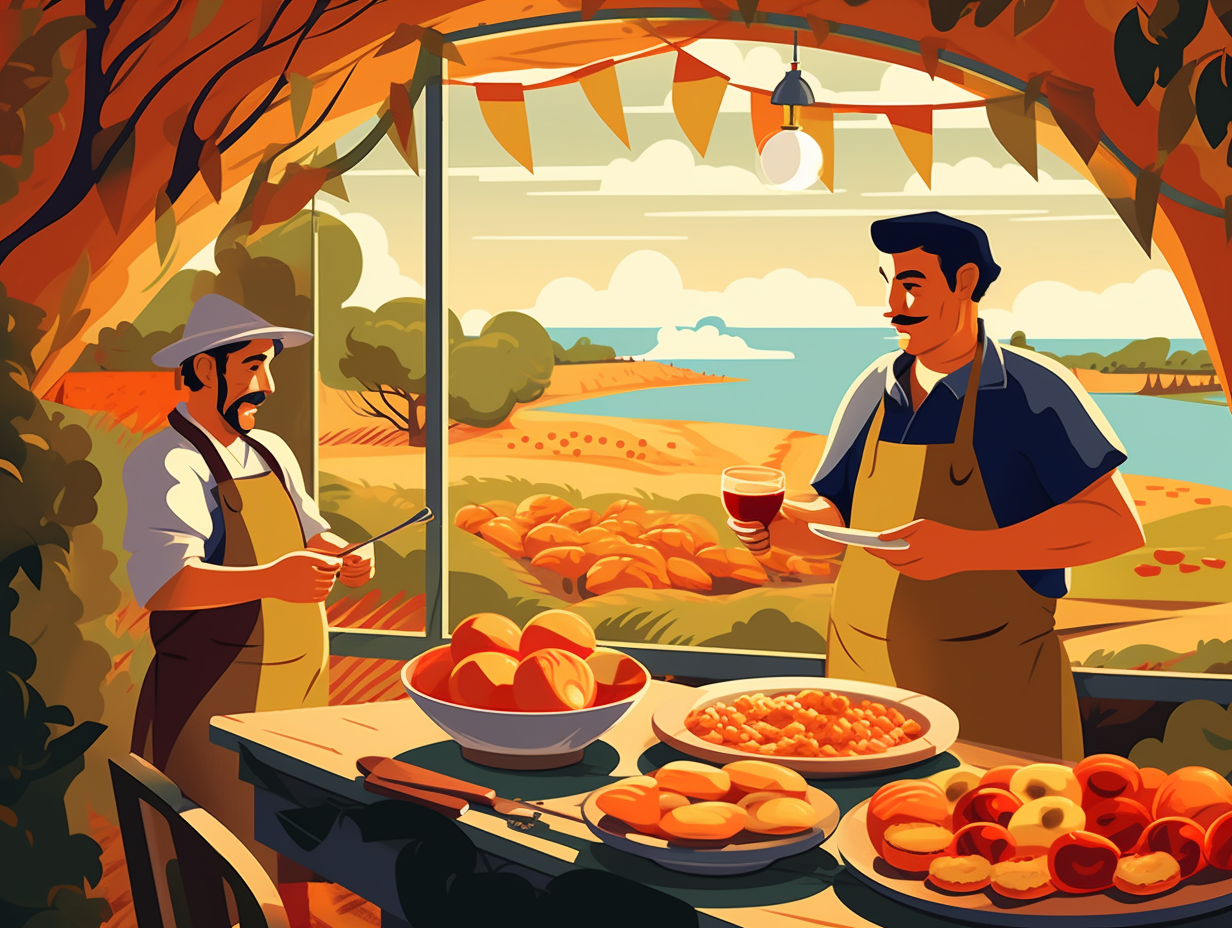
5. Sangria: Spain's Got Talent, or Not?
If sangria were a contestant on Spain's Got Talent, it would likely get four big, red buzzers from the locals: Despite being popular worldwide, this fruity concoction of red wine, fruit, and the occasional splash of brandy isn't as much of a traditional staple in Spanish culture as you might think. In fact, it's the tourists who've catapulted sangria to fame (especially after its debut at the 1964 New York World's Fair) while Spaniards prefer to quench their summer thirst with the lesser-known tinto de verano and often settle for store-bought sangria when the urge arises.
Source => spanishsabores.com
6. Beer Quest: Spain's Suds System
If you thought the metric system could quench your beer quest, think again, amigo! In Spain, they've got a whole new system for suds: Forget small and large, you could be drinking a "caña" of 20 cl, a "tubo" of 30-50 cl in a lengthy glass, a "botellín" of 25 cl, or even a "jarra" of 50 cl. Mix that with lemon drinks and you've got yourself a "clara" or "champú," and don't forget to try their ever-growing craft beer scene – because in Spain, every region is brewing something special.
Source => mausschool.com
7. Luxury Hams: Jamón Ibérico's Finest
In a land where the rich and famous pig out on luxurious gourmet hams, even the common swine takes pride in their cured meat pedigree: Spain is famous for its high-quality cured meats, particularly jamón serrano, which accounts for 90% of the country's annual production; however, the exquisite jamón ibérico, made from at least 75% black ibérico pigs, takes the spotlight, with the crème de la crème, Jamón ibérico de bellota, coming from free-range, acorn-eating black Ibérico pigs and costing over $2,000 for a single ham.
Source => foodandwine.com
8. Free Tapas: Eastern Andalucía's Wallet-Friendly Tradition
Feeling peckish in the land of tapas? Fear not, intrepid gastronomes, for Spain has got you covered like a piece of bread under the finest hand-carved jamón ibérico: While tapas bars in most parts of Spain now charge for their bite-sized delicacies, head to eastern Andalucía, specifically Almeria, and you will find that the legendary legacy of free tapas with drinks lives on. Taverns like Nuestra Tierra Taberna serve delectable dishes such as migas and zaramandoña alongside your favorite libations like wine, beer, or sherry, with the tapas offerings only growing more abundant as you order more rounds, turning into a deliciously wallet-friendly Andalusian tradition.
Source => 10best.com
9. Hernán Cortés: The Chorizo-Spreading Conquistador
Watch out, Old MacDonald – there's a new farmer in town, and his name is Hernán Cortés! This Spanish conquistador didn't just conquer the Aztec empire; he also took home the golden medal for taking chorizo sausage from Spain and introducing it to Mexican cuisine: Hernán and his soldiers started raising pigs in Mexico over 500 years ago, leading to the modern Mexican chorizo we know today, filled with chili peppers and boasting a softer texture compared to the classic Spanish variety. And that, dear reader, is how the spicy sausage crossed the pond!
Source => elpollonorteno.net
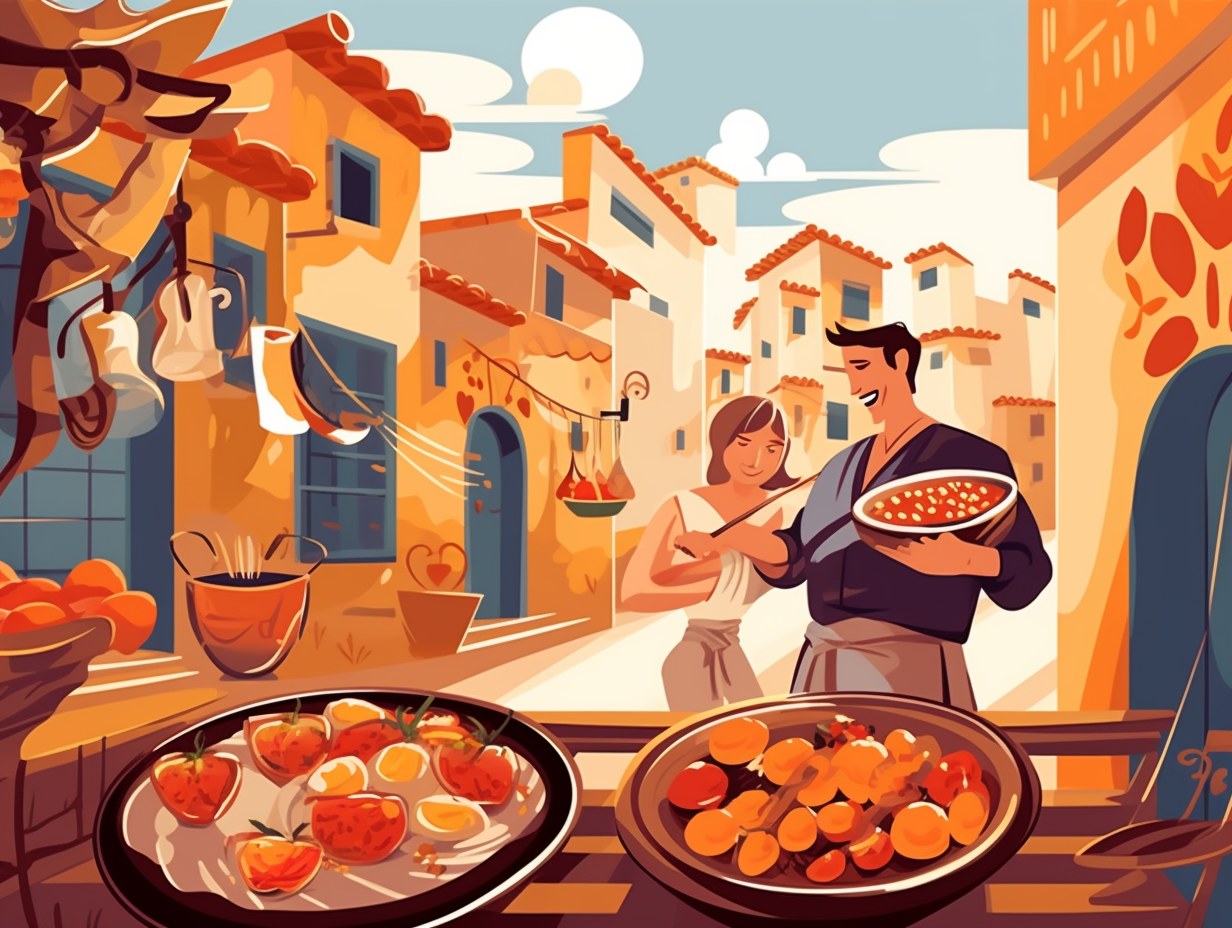
10. Clay Pots: Spain's Tupperware Alternative
Who needs Tupperware when you've got clay pots kissed by Spanish magic?: The traditional Spanish marinades of escabeche, adobo, and salmuera were used for preserving food like rabbit, hare, and partridge by packing them in spiced vinegar marinade in clay pots, creating a protective seal with olive oil, allowing the food to be kept for months and resulting in scrumptious dishes such as canned partridge in escabeche, which is now considered a gourmet food product from Spain.
Source => investinspain.org
11. Gazpacho: From Humble Beginnings to Tasty Stardom
Before tomatoes were turned into ketchup or faked their way into salsa, they found their true calling in a Spanish summer soup: Gazpacho, which originated as a peasant dish in the southern regions of Andalusia and Algarve, was made of humble beginnings like stale bread, water, and olive oil. Graduating from its frugal past, modern gazpacho has now made room on its plate for an array of fresh vegetables, fruits like strawberries and watermelon, and even seafood, just in time to dazzle your taste buds.
Source => alphafoodie.com
Related Fun Facts

